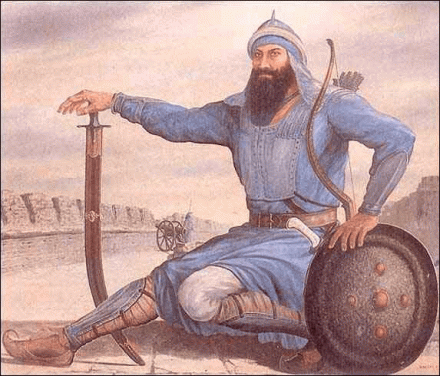The Story of the Seljuks in the Room (Episode-1)
When we think of the names of the Muslim rulers of the Middle Ages, we first think of the Seljuks. They were a dynasty of Turkish descent. A special branch of these Seljuks is the Seljuks of the room or the Seljuks of the room. They ruled most of Anatolia or Rome from the end of the eleventh century to the beginning of the thirteenth century. The region now known as Turkey was known as Rome or Anatolia.The region is so named because it is part of the Eastern Roman Empire. This time we are organizing for the readers of Roar Bangla with the Seljuks of this room.
In this long series we will learn about their ups and downs, famous rulers and all the details. Today is the first episode of this series. In this episode we will learn a brief history of the early Seljuks.Then gradually as the episode progresses, we will continue to learn more deeply about the Seljuk people in the room. So let's start the reader without delay!
The Seljuks are originally from the Oghuz tribe of Turkish descent. In the eleventh century, they were able to bring the present-day Mesopotamia, Syria, Palestine, Iran, etc. of South-West Asia under their rule by their military capabilities. Thus began the Turkish sphere of influence in the Middle East.
In the tenth century, a class of nomads emerged from Central Asia and the northeastern part of Russia. Among them was a tribe whose leader was named Seljuk. This tribe later converted to Sunni Islam. They played an important role in the defense of the Samani Empire and the Ghazni Empire. Once they became independent from the Ghazni Empire, they focused on expanding their empire.Chagri Beg and Tughril Beg, two grandsons of the Seljuks, established a fragmented empire in the Persian territory under their rule. Chagri occupied the Khorasan region and Tughril occupied western Iran and the Mesopotamian region.
During the reigns of Alp Arsalan and Malik Shah, the Seljuks were able to control all of Iran and Mesopotamia, and even Syria and Palestine. In 1061, Sultan Alp Arsalan defeated a large Byzantine army at the historic battle of Manzikart, and the Byzantine emperor Romanos IV Diogenes IV was captured.
Through this landmark war, the door to Anatolia was opened forever for the Turks. However, according to the eminent researcher Helenbrand, the beginning of the Seljuk Sultanate dates back to at least four decades before the historic Battle of Manjikart in 1071 (Hillenbrand, 2006, pp. 3-25).

Source
Two decades before the Battle of Manjikart, the Seljuks, led by Tughril Beg, played a role in uniting the entire Muslim world under Sunni Islam by defeating the Bouyids in Baghdad. After the conquest of Baghdad, Tughril Beg proposed marriage to the daughter of the then Abbasid Caliph Qayyim of Baghdad. Caliph Qayyim agreed to this and conferred the title of Sultan on Tughril Beg.Tughril Beg died just six months after the marriage. Since he had no heirs to the empire, the responsibility fell on the shoulders of his nephew Alp Arsalan (son of Chagri Beg).
Alp Arsalan was born in the womb of Chagri Beg's youngest wife. Then both Alap Arsalan and Malik Shah took the Seljuk Empire to the outskirts of Egypt during their reign. When they were engaged in this military campaign, Wazir Nizam ul Mulk looked after all the internal affairs, including the administration of their state.
